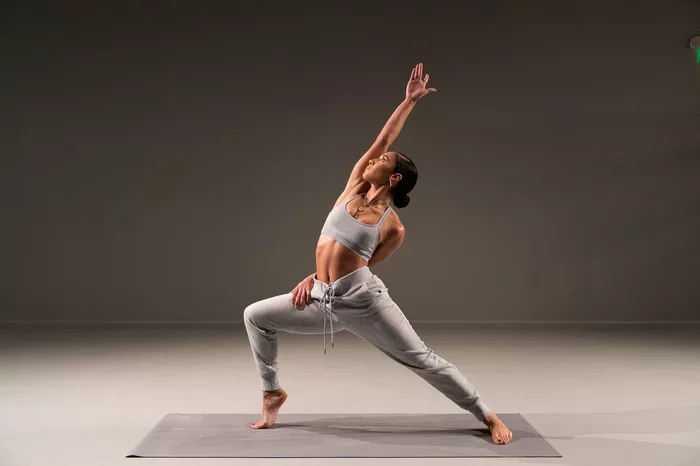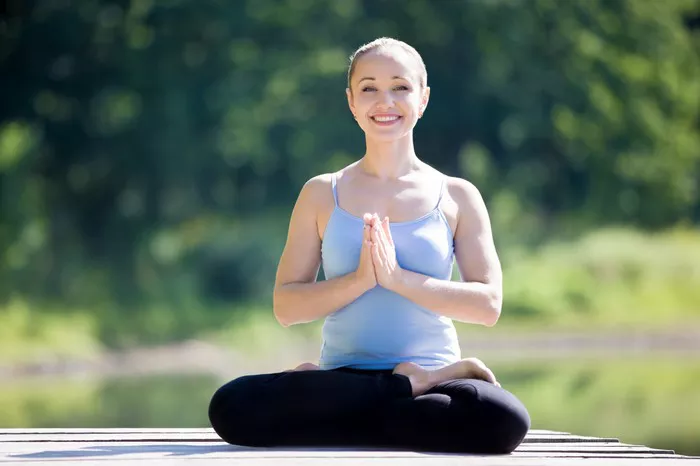In the modern world, yoga has become an accessible practice for people of all ages and backgrounds. While the traditional benefits of yoga — like improving flexibility, strength, and relaxation — are well known, a relatively new approach, mindful yoga, has gained attention for its holistic and therapeutic effects. But what exactly is mindful yoga, and how is it different from the various other types of yoga practices? This article aims to answer these questions, offering a thorough understanding of what mindful yoga is, its history, its benefits, and how to incorporate it into daily life.
1. The Concept of Mindfulness
Before diving into mindful yoga itself, it’s essential to understand the concept of mindfulness. Mindfulness is the practice of being fully present and aware in the current moment, without judgment. It involves observing one’s thoughts, feelings, and sensations in the body with acceptance and non-reactivity. Rooted in Buddhist meditation, mindfulness is now a widely practiced technique for reducing stress, improving emotional regulation, and enhancing overall well-being.
In simple terms, mindfulness is about being present — not dwelling on the past or worrying about the future, but experiencing life as it happens, moment by moment. Mindful practices can be applied to many activities, from eating to walking, and, of course, to yoga.
2. What is Mindful Yoga?
Mindful yoga combines the physical postures and breathwork of traditional yoga with the principles of mindfulness. It emphasizes being fully aware of each movement, sensation, and breath, without rushing through poses or allowing distractions to take over the practice. It encourages students to focus on the present moment and develop a deep connection with their body, mind, and spirit.
Unlike more fast-paced forms of yoga, such as Vinyasa or Power Yoga, mindful yoga is often slower, with a focus on deliberate movements and conscious breathing. This approach allows practitioners to experience each pose more deeply and become more aware of their body’s sensations, thoughts, and emotions. It is a practice that encourages self-awareness, self-compassion, and a non-judgmental attitude toward one’s abilities.
Key Characteristics of Mindful Yoga
Awareness: Practitioners are encouraged to be aware of their body, breath, and surroundings. This awareness extends beyond the physical practice to include mental and emotional states.
Present Moment Focus: In mindful yoga, attention is continually brought back to the present moment. Rather than getting lost in thoughts or distractions, practitioners focus on the here and now, cultivating a deeper connection with the body and mind.
Non-judgment: Mindful yoga promotes a sense of acceptance and kindness toward oneself. Practitioners are encouraged to avoid self-criticism and judgment, which can often arise when people compare themselves to others or feel frustrated by their abilities.
Breath Awareness: The breath is a central component of mindful yoga, with deep, conscious breathing used to guide movement, calm the mind, and enhance relaxation.
Gentle Movement: While traditional yoga can vary in intensity, mindful yoga generally emphasizes gentle, intentional movements. There is no rush to complete poses or move to the next one; rather, the focus is on the quality of each movement and how it feels in the body.
3. The Origins and Evolution of Mindful Yoga
Mindful yoga, as we know it today, is a relatively recent development, though its roots lie in the ancient traditions of yoga and meditation. Yoga, in its traditional form, has been practiced for thousands of years in India and is intertwined with spiritual and philosophical teachings. It has been known to enhance physical, mental, and spiritual well-being.
The concept of mindfulness, as mentioned earlier, is influenced by Buddhist meditation practices, which emphasize present-moment awareness. In the West, mindfulness became widely recognized through the work of Dr. Jon Kabat-Zinn, who developed Mindfulness-Based Stress Reduction (MBSR) in the late 1970s. MBSR incorporates meditation and mindful movement techniques to reduce stress and promote healing.
Over time, the integration of mindfulness into yoga has created a more contemporary approach that emphasizes a mindful, compassionate attitude toward the practice. While traditional yoga often focused on the physical postures and breath, mindful yoga integrates mindfulness meditation into the practice, allowing practitioners to experience a deeper connection with their mind and body.
Today, mindful yoga is practiced in various forms, ranging from gentle Hatha yoga classes to specialized mindfulness-based programs aimed at stress reduction and emotional well-being.
4. Benefits of Mindful Yoga
The benefits of mindful yoga are wide-ranging, touching on physical, emotional, and psychological aspects of well-being. Below are some of the key benefits of incorporating mindfulness into a yoga practice.
Physical Benefits
Improved Flexibility and Strength: Like all forms of yoga, mindful yoga enhances flexibility and strengthens muscles. Through slow, deliberate movements, practitioners can improve their range of motion and build strength over time.
Better Posture and Alignment: The mindful approach encourages greater awareness of body alignment, which can help to prevent injuries and promote better posture both on and off the mat.
Increased Body Awareness: Mindful yoga cultivates a stronger connection with one’s body, allowing practitioners to tune into subtle sensations. This heightened awareness can help prevent overuse injuries and promote overall physical health.
Stress Reduction: The emphasis on deep breathing, relaxation, and mindfulness can lower the body’s stress response. Studies have shown that mindful practices reduce levels of cortisol, the stress hormone, leading to a more relaxed and balanced state of being.
Mental and Emotional Benefits
Reduction of Anxiety and Depression: Mindful yoga helps regulate emotions by encouraging the practitioner to stay present and avoid becoming overwhelmed by negative thoughts. It has been shown to reduce symptoms of anxiety, depression, and other mental health issues.
Increased Focus and Concentration: The practice of paying attention to the breath, body, and movements helps train the mind to stay focused and reduce distractions. Over time, this improved focus can translate into better concentration in daily life.
Improved Emotional Regulation: By developing mindfulness, practitioners learn to observe their emotions without judgment, allowing for healthier emotional responses. This skill is particularly helpful for managing stress and difficult emotions like anger or sadness.
Greater Sense of Calm: The deep breathing and focused attention of mindful yoga activate the parasympathetic nervous system, which promotes relaxation and a sense of calm.
Spiritual and Holistic Benefits
Increased Self-Awareness: Mindful yoga encourages self-reflection and greater awareness of one’s thoughts, feelings, and behaviors. This self-awareness can lead to greater personal growth and a deeper understanding of one’s true nature.
Connection with the Present Moment: By practicing mindfulness on the mat, practitioners learn to let go of past regrets or future anxieties and cultivate a sense of peace and contentment in the present moment.
Spiritual Growth: For those practicing yoga as part of their spiritual journey, mindful yoga can deepen the connection to the body, mind, and spirit. The practice fosters an environment where practitioners can explore their inner world with kindness, patience, and acceptance.
5. How to Practice Mindful Yoga
Mindful yoga can be practiced by anyone, regardless of their experience level or physical ability. Below are some tips on how to incorporate mindfulness into your yoga practice.
Begin with Breath
Breathing is the foundation of mindful yoga. To start, take a few moments to become aware of your breath. Notice the rise and fall of your belly or chest with each inhale and exhale. As you move through your practice, aim to synchronize your breath with your movements, allowing your breath to guide the rhythm of your practice. When your mind starts to wander, gently bring your attention back to the breath.
Slow Down and Be Present
Mindful yoga is not about completing a set of poses or reaching a goal. Instead, it’s about experiencing each moment fully. Slow down the pace of your practice, and focus on each movement. Notice how your body feels as you transition between poses. If you feel discomfort or tension, take a moment to adjust or breathe into the sensation rather than forcing through the pose.
Embrace Self-Compassion
In mindful yoga, there is no place for self-judgment. Allow yourself to accept where you are in your practice, and honor your body’s limitations. If a pose feels challenging, offer yourself compassion rather than frustration. Remember, yoga is not a competition — it’s a personal journey of self-exploration.
Integrate Mindfulness Throughout Your Day
While mindful yoga can be a powerful practice on the mat, the principles of mindfulness can be carried into daily life. Practice bringing your full attention to everyday activities, whether it’s eating, walking, or having a conversation. This will help you develop a deeper sense of presence and awareness in all aspects of your life.
Conclusion
Mindful yoga is an enriching and transformative practice that goes beyond just physical exercise. By integrating mindfulness into yoga, practitioners cultivate greater awareness of their body, mind, and emotions, leading to a deeper connection with themselves and the world around them. Whether you are seeking to reduce stress, enhance physical health, or deepen your spiritual practice, mindful yoga offers a pathway to holistic well-being. With regular practice, it can become a powerful tool for navigating the challenges of daily life with greater calm, focus, and compassion.
Related topics:


























